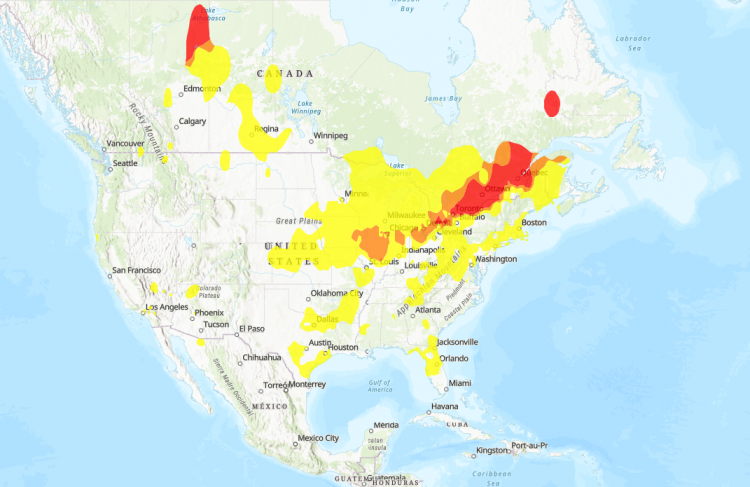Smoke from more than 200 wildfires burning across Canada is blanketing parts of the United States in hazardous haze, prompting air quality alerts from the Great Plains to the Great Lakes, while plumes have traveled as far as Europe and the Arctic. The Canadian Interagency Forest Fire Centre reported Thursday that 103 of the fires were classified as "out of control," with the worst conditions concentrated in British Columbia and Alberta.
Air quality conditions deteriorated sharply across major U.S. cities including Chicago, Milwaukee, Detroit, Omaha, and Green Bay. Chicago recorded the second-worst air quality among global cities Thursday. While most of the general public is not expected to be severely affected, officials warned sensitive groups-including those with asthma, pregnant individuals, and the elderly-to stay indoors during the alerts.
On Friday, conditions remained poor across eastern Nebraska, northern Indiana, and parts of Michigan, with moderate to unhealthy levels forecast to persist in the Midwest and Great Lakes into the weekend. According to the Copernicus Atmosphere Monitoring Service (CAMS), long-range smoke transport has led to haze and discolored sunsets in Ireland, the United Kingdom, France, and Germany.
In Canada, more than 6 million acres have burned so far this year, largely in forested zones. Manitoba and Saskatchewan remain under states of emergency, with more than 17,000 residents evacuated. He had “never seen anything like it," Saskatchewan Premier Scott Moe said Wednesday, noting that fires are "encroaching" on towns like La Ronge, where several buildings were lost.
Moe added that ongoing dry weather and a "significant lack of moisture" have driven "over 200 wildfires" in his province alone. Reinforcements from Arizona, Oregon, and Alaska have been deployed to assist local firefighting efforts. Saskatchewan Public Safety has discouraged all nonessential travel due to "significant fire activity."
Satellite data shows smoke drifting more than 5,000 miles, reaching parts of western Russia and even interacting with Saharan dust in the atmosphere over Florida. In Toronto, a resident described the air as smelling like "burning plastic." Similar conditions were reported from Windsor to Ottawa.
CAMS noted that fire emissions in Manitoba have already exceeded 2023's full-year record by 13 megatons, making 2025 the province's most intense fire season on record. Across Canada, fire-related carbon emissions are the second highest ever recorded through early June, trailing only last year.
Adding to atmospheric disturbances, Saharan dust has reached Florida and the Gulf Coast states. The National Weather Service in Miami stated that the dust is likely suppressing thunderstorms and increasing surface temperatures. Dust carried by rain left visible residues on vehicles across the region.






